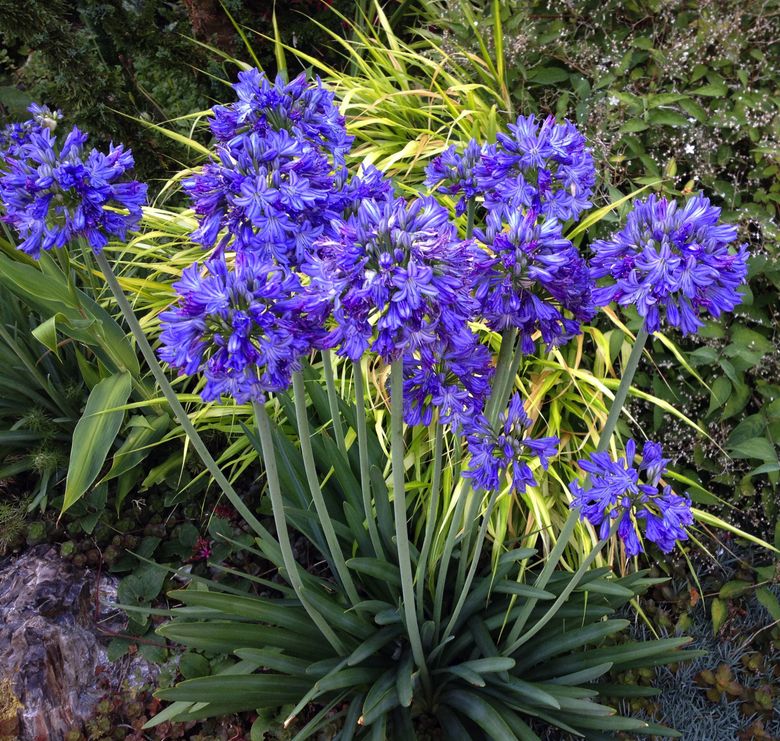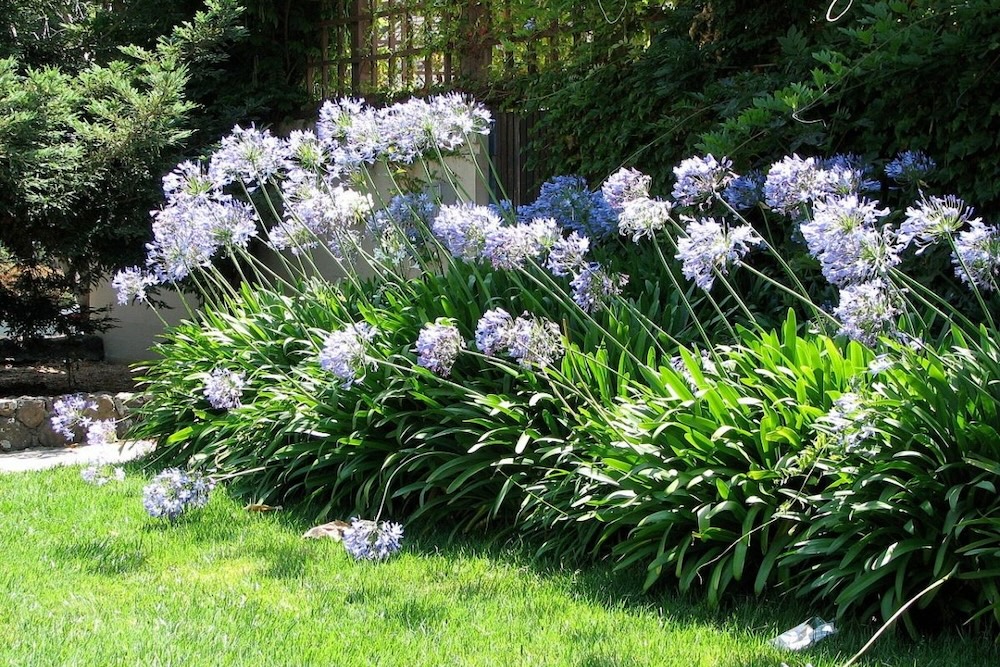Sensational Agapanthus: Enhancing Your Yard's Appeal
Sensational Agapanthus: Enhancing Your Yard's Appeal
Blog Article
Understanding the Art of Agapanthus Care: Essential Actions for Healthy Growth and Vibrant Flowers
In the realm of horticulture, the farming of agapanthus stands as a fulfilling venture for those that seek to support these classy flowering plants. From selecting the ideal selection to grasping pruning methods, the journey towards growing growing agapanthus plants is complex and holds the crucial to opening the complete capacity of these organic treasures.

Choosing the Right Agapanthus Selection

When selecting the appropriate Agapanthus variety for your yard, think about aspects such as environment viability, blossom color, and growth habit. Furthermore, think about the climate in your region to ensure the Agapanthus range you choose can flourish in your particular problems. Understanding the development habit of different Agapanthus selections is important for appropriate positioning within your yard.
Ideal Growing Problems
Thinking about the ideal ecological demands is vital for effective Agapanthus growing. Agapanthus plants are delicate to chilly temperatures and must be safeguarded from frost throughout wintertime months.
To make sure healthy development and lively blooms, plant Agapanthus bulbs at a depth of concerning 2-4 inches and room them 8-12 inches apart. Including raw material, such as garden compost, to the dirt can improve drain and fertility, advertising robust origin advancement. Mulching around the base of the plants helps maintain wetness and reduces weed development. Normal watering is essential, particularly during the growing season, to maintain the soil continually wet however not soaked.
Watering and Fertilizing Tips
Keeping proper moisture levels and offering essential nutrients are crucial components in the care regimen for Agapanthus plants. When it comes to watering Agapanthus, it is crucial to strike an equilibrium. These plants favor consistently wet soil however are at risk to root rot if overwatered.
Fertilizing Agapanthus is vital for promoting healthy and balanced development and respected blooms. Use a well balanced plant food, such as a 10-10-10 formula, in the very early springtime as brand-new development emerges. By adhering to these watering and feeding ideas, you can guarantee your Agapanthus plants grow and create lively, durable blooms.
Pruning Techniques for Agapanthus
Trimming Agapanthus plants at the ideal times and with proper techniques is critical for keeping their health and wellness and promoting optimal development and flowering. The ideal time to prune Agapanthus is look at here now in late wintertime or early springtime prior to brand-new growth arises. Start by removing any type of yellowing or dead fallen leaves near the base of the plant. Cut them as short as possible without damaging the emerging shoots.
Deadheading invested blossoms can likewise reroute the plant's energy into generating even more blossoms instead than establishing seeds. If click for more you want to collect seeds for propagation, leave some blossoms to mature and dry on the plant.
Keep in mind to utilize tidy, sharp devices to make accurate cuts and lower the threat of introducing diseases. Agapanthus. Normal pruning will help maintain your Agapanthus looking healthy and neat while ensuring a bountiful screen of lovely flowers
Taking Care Of Common Insects and Diseases
After ensuring appropriate trimming strategies for Agapanthus, it is vital to deal with common parasites and illness that can impact the wellness and vitality of these plants. One usual bug that affects Agapanthus is the Agapanthus gall midge.
One more typical concern is fungal fallen leave area, which presents as dark lesions on the fallen leaves. To stop fungal illness, guarantee great air blood circulation around the plants, prevent overhanging watering, and eliminate any kind of infected leaves quickly. Additionally, Agapanthus plants can experience from root rot if they are grown in badly draining pipes soil. To avoid this, plant Agapanthus in well-draining dirt and stay clear of overwatering. By being attentive and taking punctual action versus diseases and parasites, you can aid your Agapanthus plants prosper and generate vibrant blooms.

Verdict
In conclusion, understanding the art of agapanthus care entails selecting the appropriate selection, supplying ideal planting conditions, correct watering and feeding, proper trimming strategies, and addressing typical insects and illness. By adhering to these essential steps, you can make certain healthy and balanced growth and dynamic blooms for your agapanthus plants. Keep in mind to consistently keep track of and maintain your plants to advertise their general health and longevity.
To guarantee healthy and balanced growth and dynamic blossoms, plant Agapanthus light bulbs at a depth of about 2-4 inches and room them 8-12 inches apart. By adhering to these watering and fertilizing ideas, you can guarantee your Agapanthus plants find out here now flourish and generate lively, lasting blooms.
One typical parasite that affects Agapanthus is the Agapanthus gall midget. Additionally, Agapanthus plants can experience from root rot if they are grown in poorly draining pipes soil. By following these vital steps, you can guarantee healthy and balanced development and lively blooms for your agapanthus plants.
Report this page